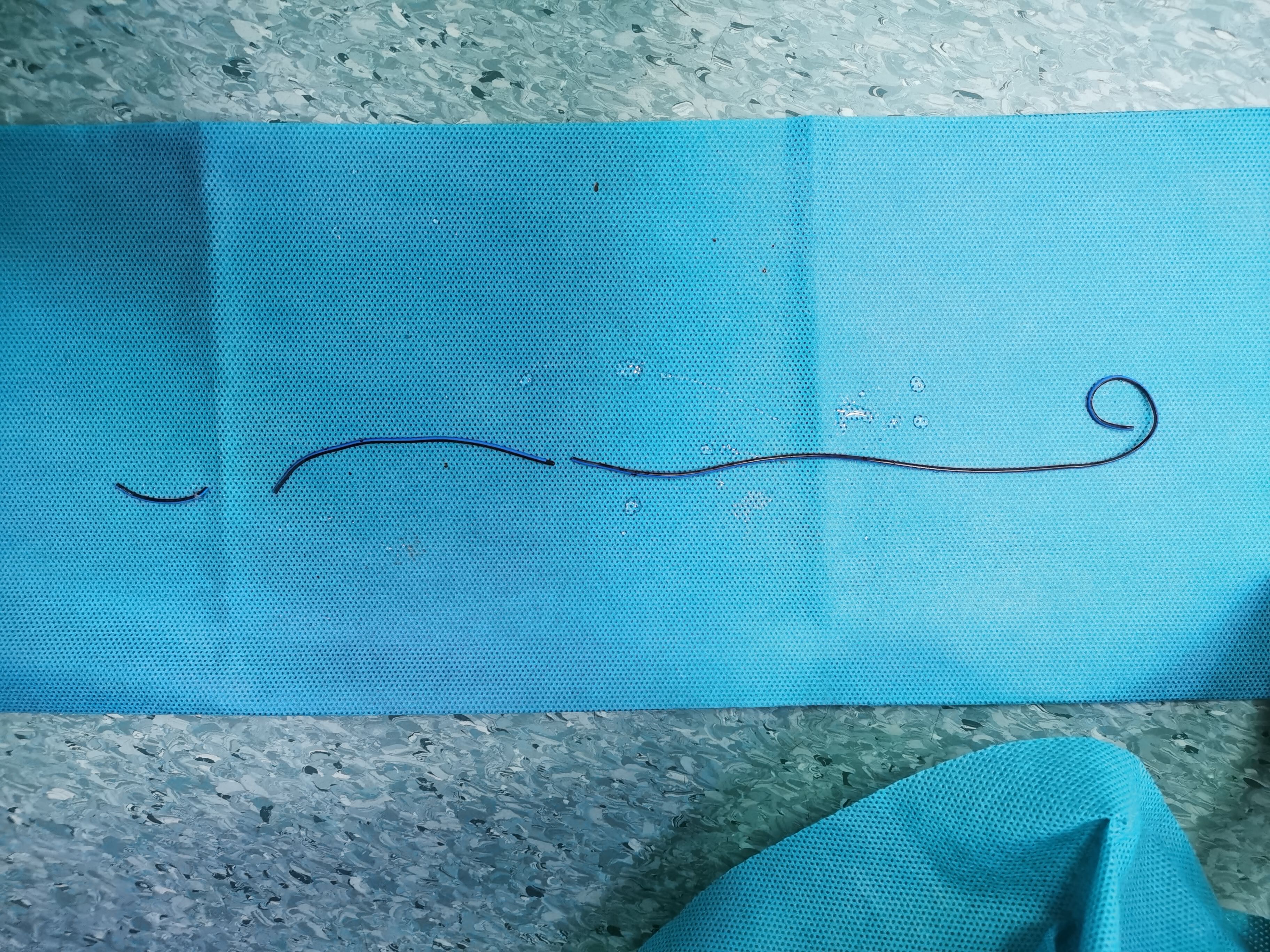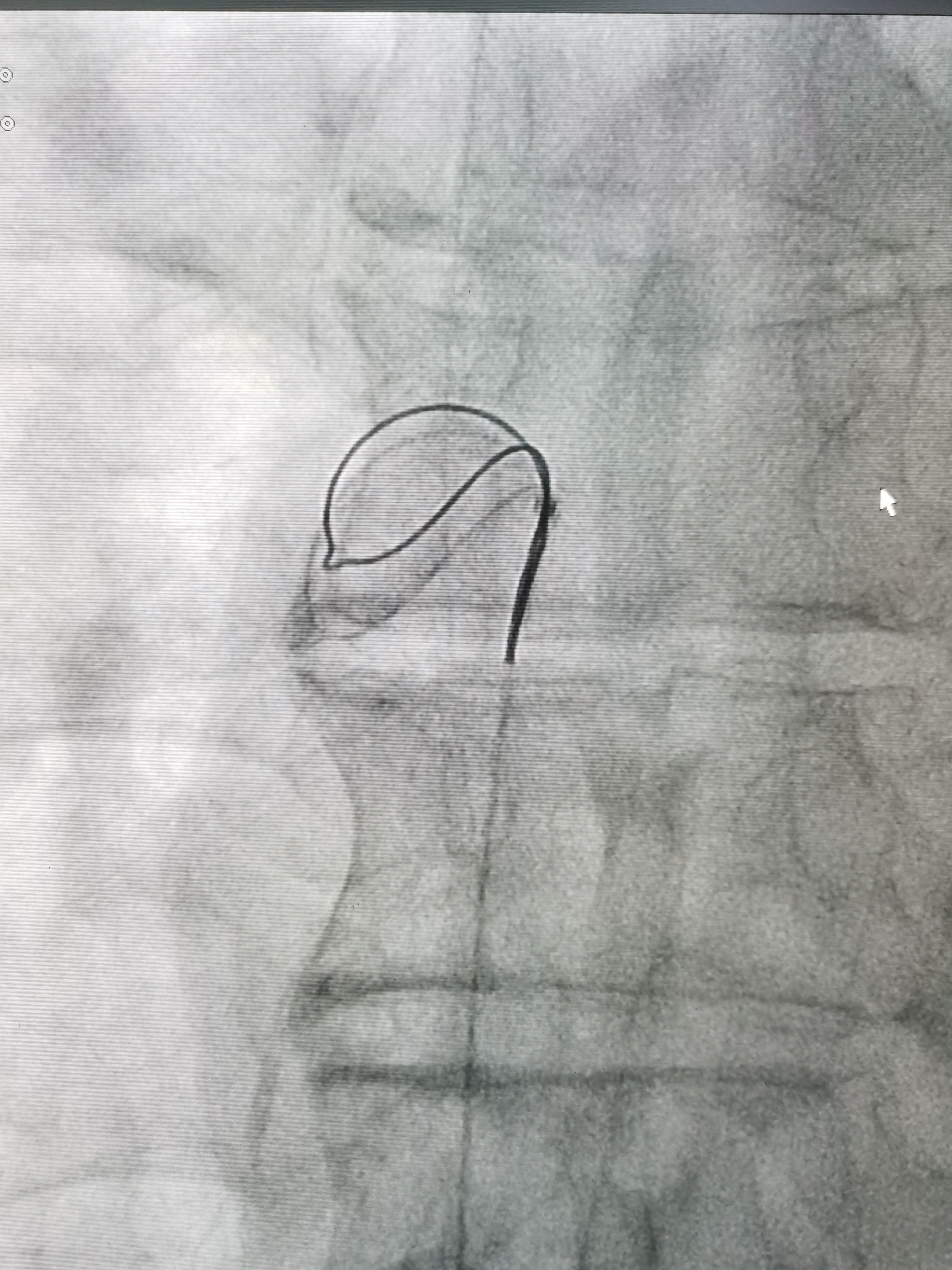Correspondent: Wang Genhua and Wang Danlin of Changzheng Hospital
“The 20 cm long infusion catheter is broken in the blood vessel. If it is not removed in time, will affect the blood flow. The control of influenza infection, leads to life-threatening!” On March 21, Shanghai Changzheng Hospital cooperated with multiple disciplines to successfully perform minimally invasive interventional surgery for 77-year-old old man Chen who was bedridden for a long time, complete The ruptured infusion PICC catheter in the superior vena cava was removed, and the “time bomb” that threatened the patient’s life was successfully relieved. Uncle Chen turned the corner.
The 77-year-old old man Chen lived in a nursing home for a long time. He suffered from disturbance of consciousness after a cerebral infarction 6 years ago and was bedridden for a long time. One year ago, he had recurrent fever, and he visited a doctor several times in a foreign hospital. Due to the need for long-term intravenous medication and the poor vascular condition of Uncle Chen, a PICC was placed in his left upper extremity expensive vein in the other hospital. For infusion therapy, this release is 7 months long. However, 3 days ago, the PICC tube was blocked, and Mr. Chen had a sudden chill and high fever, and the blood culture was positive. Consider the source of the PICC tube and replace it. The doctor in the rehabilitation hospital broke during the removal of the catheter. If the foreign body in the blood vessel is not removed in time, the infection is bound to be prolonged and there will be danger of life.

PICC catheter in vivo
Due to the extremely difficult operation to remove intravascular foreign bodies, and the The old man himself had a serious underlying disease, and the nursing home immediately sent the old man to Changzheng Hospital. Through CT and X-ray examination, it was found that the ruptured 20 cm long PICC catheter was located in the segment from the axillary vein to the superior vena cava. Director Li Wenfang of the Department of Emergency and Critical Care Medicine considered that the patient’s tracheal intubation, ventilator-assisted ventilation, bloodstream infection, septic shock, and catheter removal were the top priorities, and immediately contacted Director Qu Lefeng of Vascular Surgery. Director Qu and Director Li hit it off. After excluding the new coronary pneumonia, Uncle Chen was admitted to the Department of Emergency and Critical Care Medicine, and the operation was performed by Dr. Jin Jie, the right-hand student of the director of Vascular Surgery Qu.
Due to the lockdown of the epidemic, the patient’s daughter was isolated at home without her family to accompany her. The emergency intensive care doctor kept communicating with the patient’s daughter via phone and WeChat, explaining the potential risks of the operation. Doctor, agree to surgery”.
According to experts, because the distal end of the ruptured infusion catheter is likely to have adhered to the blood vessel, and as a foreign body, it is easy to form a thrombus. It is very difficult and risky to remove the ruptured infusion catheter under minimally invasive intervention This requires that the surgeon must have superb skills to remove the residual tube at the fastest speed without harming the blood vessels, so as to minimize the discomfort of the patient.

PICC catheter removed
Vascular Surgery, Emergency and Critical Care Medicine, Anesthesiology For patients with long-term bed rest, coma, contractures of limbs, and high muscle tension, and the catheterization laboratory, fully prepared before surgery. Director Qu Lefeng has formulated several backup plans to work together to ensure the progress of the surgery. During the operation, what Director Qu Lefeng was worried about still happened. The broken infusion catheter was “locked up” with the blood vessel, and it was very difficult to remove it. If the operation was violent, there may be the risk of blood vessel damage and rupture, which is extremely difficult for the patient. It was fatal. The team quickly changed the plan and performed meticulous operations. After arresting again, Dr. Jin Jie used the catheter advancement method to “cut and dissociate”. In only 15 minutes, he successfully grabbed the tip of the catheter that fell off, and slowly removed it from the blood vessel with a diameter of about 3 mm. The inside was completely withdrawn from the outside of the body, and the operation was successful. Uncle Chen’s physical condition is stable, the surgery area has healed well, and he has been transferred back to the rehabilitation hospital.

Picture of intraoperative intubation of PICC catheter
PICC catheter It is a single-use sterile peripherally punctured central venous catheter in which a thin, flexible, flexible catheter is inserted from a peripheral vein (usually the cubital vein) and its tip is positioned at the entrance of the superior vena cava or right atrium It has the effect of peripheral vascular catheterization and central venous therapy. It is a simple, safe and effective technique. Due to the high success rate of one-time catheter placement, low complications, long retention time, and simple and safe operation, as long as local anesthesia is required, does not restrict the patient’s arm movement. It has been widely used in clinical practice. At present, PICC catheter has become an extremely important infusion route and method, which has been widely carried out in Changzheng Hospital. The nursing department of the hospital has a full-time static therapy group and a PICC specialist nursing team.